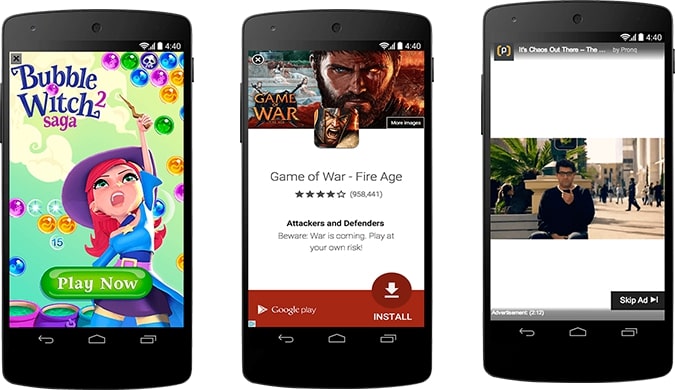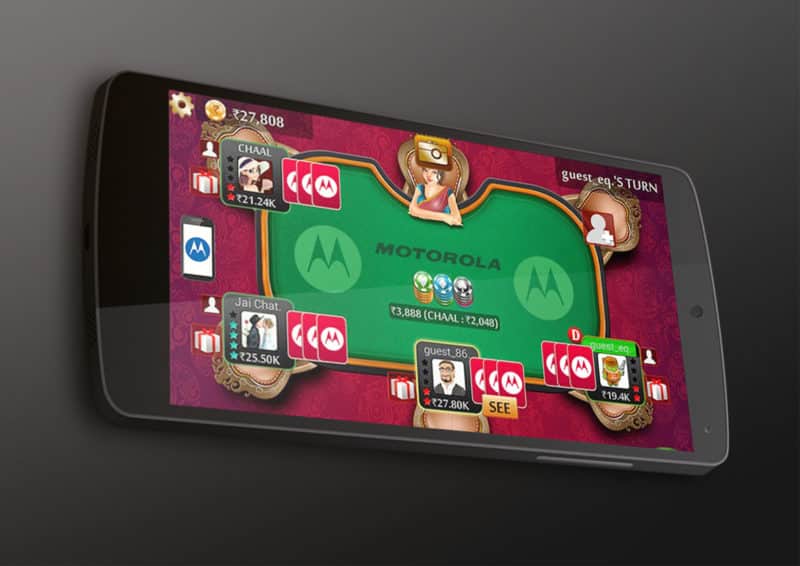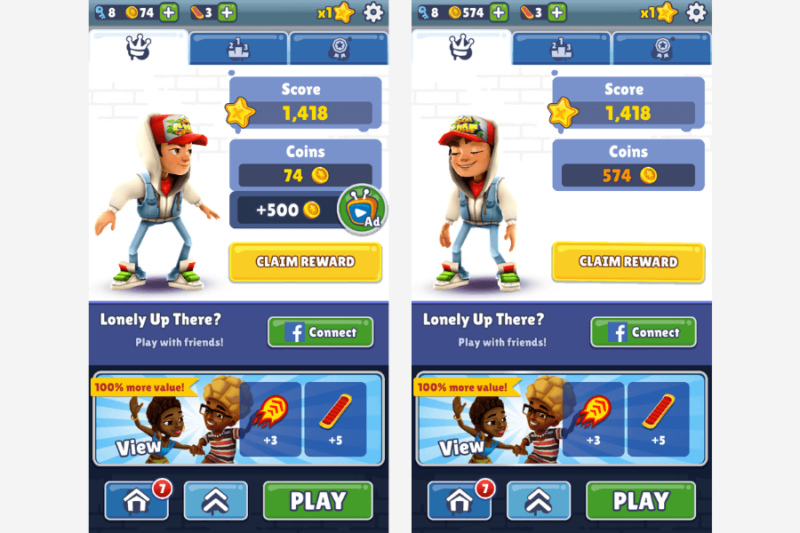Due to forced stay-at-home orders, the COVID pandemic affected the video game industry immensely. The cancellation of in-person trade shows, events, and sports contributed to that growth, forcing consumers to look at gaming and other activities to fill the void.
Additionally, the pandemic also had an effect on television, with linear TV viewership decreasing in 2022. As a result, the video game industry was one of the many to thrive, with a 20% YoY revenue increase from 2019, and reaching over $179 billion in global revenue in both hardware and software for 2020.
So it’s no shock that mobile ad game popularity increased during this time. This is the second article in our new series on why video games are a huge opportunity for advertisers in 2023.
Who plays video games
According to the IAB, the video game industry holds an estimated audience of over 3 billion gamers worldwide, and with in-game ad revenues topping $6.26 billion by the end of the year, it’s a great opportunity for brands to get in on some of that revenue.
- 227 million people in the US play video games
- 46% of people who play video games are female
- 70% of the female audience are moms
- 80% of the people who play video games are Gen Z
Zoe Soon, VP, IAB Experience Center, says gamers no longer identify as “gamers” in the traditional sense of the word, as much as people who watch tv aren’t labeled as “tv viewers.” You don’t say “TV watchers.” It’s just people… We have TV-watching behavior. We have gaming behavior, but people say “gamers,” as if they’re a separate, isolated cohort of people. That concept is shifting as gaming is becoming more fluid through social and metaverse.
Playing video games is no longer considered anti-social behavior. About 70% of Gen-Z age people who play games do so with the intention of just virtually “hanging out,” and not actually playing. A Deloitte study found that Gen Z and Millenials spend on average about 11 hours a week playing video games. Across all five countries surveyed – the UK, US, Germany, Brazil, and Japan, gaming was cited as their favorite pastime activity.
According to Statista:
- 79% of gamers are over 18
- The average video game player’s age is around 35
- 61% of adult US players play games on their mobile phones
- 80% of male gamers between 18-34 prefer shooter games
- 95% of female gamers in Asia play mobile games
- Only 27% of all American players are not Caucasian
- 73% of African American teens play video games
Furthermore, their statistics show that people over 40 also play video games. 14% are between 35-44, 12% are between 45-54, and 7% are over 65. What these statistics show is that video games are no longer played by teen boys in their parent’s basements. People of all ages, races, and genders are playing games.
In the next several years we’re going to see gaming become an interaction language. If brands think of it as this isolated channel, they’re already behind the curve. You no longer need a large gaming console attached to a TV to enjoy playing games. In 2022, virtually everyone has a full gaming console right in their hands.
Gaming is now one of the best and brightest opportunities for marketers. Players are increasingly diverse, and their interests extend far beyond just gaming. But when it comes to attention and engaged audiences, as a marketing medium it is hard to beat.
But what should brands do if they want to start advertising in video games? The answer is mobile. Games like Candy Crush, Best Fiends, and Apex Legends are popular with players of varying ages. If brands want to get in front of their ideal demographic, mobile games are the way to do it. But there are some considerations.
Mobile games – the lowest-hanging fruit
The easiest way for advertisers and brands to jump into video game advertising is through mobile. Because not all users are willing to pay for in-app purchases or prefer free games, ads are a great way to compromise. Users get to play games for free, publishers get to monetize the games, and advertisers have the opportunity to show ads to their target demographics.
In-game ads used to be intrusive, disruptive, and an overall bad experience for the player. Brands would steer clear of in-game ad placements, citing junk or bot clicks and a waste of ad spend. But game developers for mobile, PC, console, and online who wanted to monetize figured out a way to make ads native and feel part of the experience. Ads naturally fit into the ecosystem and ads have become more realistic.
In-app advertising can also take the form of awarded ads. These are unskippable ads that give users previews of in-app items or add extra lives or benefits to those who wouldn’t otherwise want to pay for an add-free version.
There are several in-game ad platform options for advertisers. Platforms such as Meta and Google AdMob offer ads in the following different formats:
- Interstitial
- Native Banners
- Contextual
- Rewarded
- Expandable
- In-game
Interstitial ads
Interstitial ads are full-screen ads that lay over the interface of the app. They show during natural breaks or transitions in the game and do not interrupt the user experience or pop up during play.
Interstitial ads are full-screen overlays. Like banner ads, they are easy to implement and don’t affect gameplay because they’re full-screen. These are ideal for games with natural pauses or transition loops because the ad can be shown to users while they’re taking a break. Interstitial ads generate fewer impressions than banners but typically generate higher revenue.

Native banners
Native banners are one of the most popular formats and one of the least intrusive. They’re similar to normal banner ads but the look and feel is similar to that of the game environment. They don’t interfere in the game but they are displayed over part of the screen.
Banner ads are rectangular ads that can show up as text, images, or video. They can show on the home screen or be embedded in the title or end-of-level screens. Banner ads are the easiest to implement and can maximize ad exposure while the user plays the game without interrupting the experience. Banner ads in mobile games are similar to banner ads on websites. AdMob has a smart banners” feature which automatically adjusts the banner size to different devices.
Native ads can be customized to match the color, visual design, layout, and context of the game where they are placed. They can contain images or videos. Native ads can reduce user churn and increase long-term value because they tend to match the app’s look and feel.

Contextual ads
Contextual ads use a standard mobile format targeting users based on content preferences, interests, and affinities. They naturally integrate products and services into the game.

Rewarded ads
Many free-to-play games offer rewarded ads as a way for players to level up or earn rewards for watching a video ad in its entirety. This format has the highest view rate and is the most widely accepted by players since they’re receiving an award for interacting.
Rewarded ads occur when users opt-in to engage with an ad in exchange for a “reward” within the app. Rewards can range from extra time playing the game to power-ups and features usually available only through in-app purchases. Rewarded ads will render video ads and interactive ads, such as payables. This ad format gives users control of the ad experience: they decide whether to engage with an ad in exchange for a valuable reward. Rewarded ads have become an increasingly popular format in gaming since they drive user engagement while delivering a huge boost to revenue for developers.

Expandable ads
Expandable ads tend to interrupt the user experience because they expand when a user clicks on them. When done correctly, they can be beneficial and offer an immersive experience. But many times the ads are clicked by accident and offer little benefit to the player.

In-game video
In-game video ads are typically 15-30 seconds long and natively placed within the game at a natural transition point. They do interrupt the playing experience, so they need to be well thought out and placed carefully.
Typically, players are rewarded with extra lives or awards when they watch a full in-game video ad. For this reason, these types of ads usually have higher success rates than others. They’re also more expensive.
Brands should carefully consider which type of in-game ad is best for their audience, goals, and budget. Split testing different offers, placements, and platforms is also advised, as there can be variability with performance and cost.
The post Brands’ guide to effective mobile game advertising appeared first on Search Engine Land.
via Search Engine Land https://ift.tt/nLkiJKe

No comments:
Post a Comment